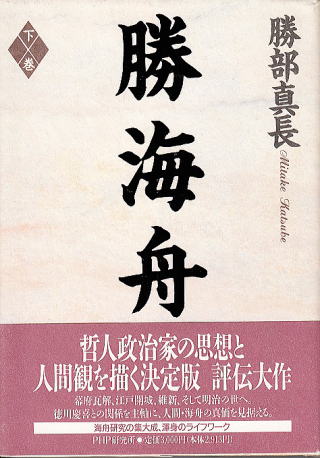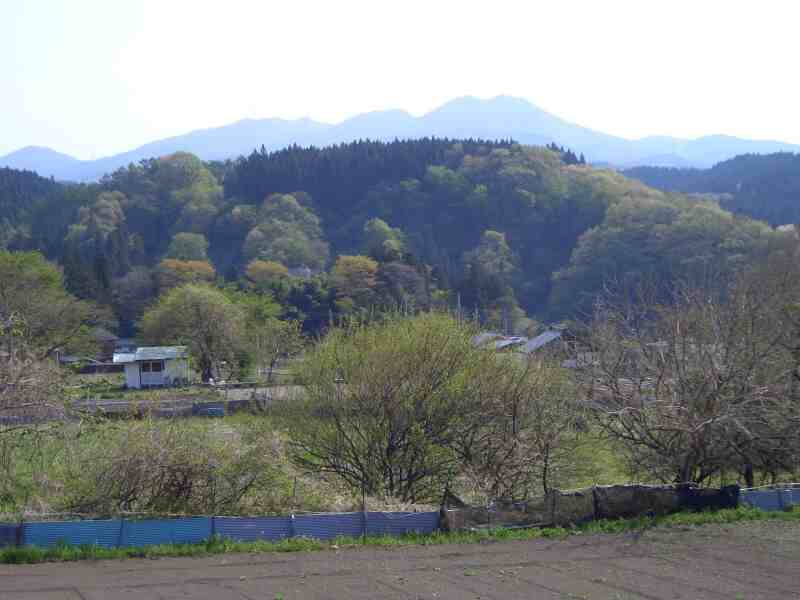|
�G��߂̓��e�E�E�E�u���I����͑ސE����R�폀�������Ă����v �����^���i���ׂ݂����j���w���C�M�x����183�i�o�g�o�o�ŁE�����S�N�j�� �u���I����͌c���l�N�ꌎ�\�ܓ��Ɋ����s��ސE�������w���ɖz�����Ă����B�t�����X�l�r�O�G�[�̖������N�Q���U���t���̏��I������ȂɁᏬ�e����ƒe������̐��������c���Ă���v�i�v�|�j The following is written on page 183 of "Kaishu Katsu" (the second volume) by Mitake Katsube (PHP Publishing, 1992, Heisei 4): On January 15 of Keio 4, Kozukenosuke Oguri was still busy purchasing weapons even after retiring from his position as an accounting magistrate. A letter dated February 6 of Meiji 1, written by a Frenchman, Biguey, to Kozukenosuke Oguri, includes an invoice for "1,000 rifles and 80,000 rounds of ammunition." (abstract). �@�@�@�@�@�@�@�@�@�@�@�@
Many people have probably read this book because Mr. Katsube is a professor emeritus at Ochanomizu University and a well-known researcher on Kaishu Katsu. This would lead to the "Oguri guilt theory" (i.e., the West was right) that Kozukenosuke Oguri deserved to be killed by the West (the new Meiji government forces) because he was still busy purchasing weapons as a war advocate after being relieved of his position as an accounting magistrate. �@ Did such a thing really happen? |
|||
|---|---|---|---|
|
�@�s�R �@Doubt �@�@ �@���̂���̏��I����̍s��������ƁE�E�E A look at Kozukenosuke Oguri's activities around this time (1868 Keio 4) shows the following: Around February 6, the date in question, is when he was preparing to move to Gonda Village.�@("Oguri Diary") 1. Oguri was preparing to move to a mountain village in Jyoshu (today's Gunma Prefecture) with his family, intending to bring tea trees and garden plants from Edo and to farm, and his servant, Masahiko Tsukamoto, was also about to move with his family, including an infant. In light of Oguri's words and actions during such a period, if we add Katsube's story above, "Oguri and his family, including his retainers, even carried their garden plants with them and were about to go off to war. This story does not make any sense at all. 2. After being relieved of his official position in the shogunate, would he have the authority or funds to make such a discretionary decision as "purchasing 1,000 rifles and 80,000 rounds of ammunition"? |
|||
|
�����~�����Ďn�߂��ω��R�́A�����̋u�̍ŏ㕔�̐��ؗ��̂�����i�q�������c�j�E�w�i�͐Y���R |
|||
|
�@�@����Ƙa��̓ǂ݈Ⴂ�Œ�����ꂽ�G��� It turned out to be a frame-up against Oguri, which was made by the author's misreading of the Western and Japanese calendars. �@�������̕��͂́A���̖{�̎j�������ɂ��ď����Ă��܂��B Mr. Katsube bases his writing on historical documents (French letters) from the following books:
�@ Mr. Katsube is writing on the basis of this historical document, but please note the date of "February 6, 1868" in Mr. Biguey's letter. �@ As you know, the Japanese calendar (lunar or old calendar) was used in Japan at that time, while the Western calendar (solar or new calendar) was used in the West. Therefore, when writing dates on letters, some foreigners who had lived in Japan for a long time would write the Japanese calendar date side by side with the Western calendar date after the Western calendar date, taking into consideration the fact that the Western calendar and the Japanese calendar had an error in the number of days. (Some examples of this can be found in the above book by Mr. Osatake) �@�����Ŗ��ɂ��Ă���r�O�G�[���̎莆�̂悤�ɁA������������Ă���ꍇ�́A�������̓��t�ł���B �@�ł͂��̓��i�����1868�N�Q���U���j�͘a��ł͉������A If, as in Mr. Biguay's letter in question here, only the western calendar is written, then of course it is the date in the western calendar. �@ Let us check what day this date (February 6, 1868 in the western calendar) is in the Japanese calendar. It is "January 13, Keio 4." �@���̏\�O���͏��I����͊����s�E���R��s�E�C�R��s�ݐE���ŁA���H�����̐킢���瓦���A�������R�c����܂ߐ��R�Ɛ키���������邩���{�Ƃ��Č��߂��˂Ă����Œ��̂��ƁB�V�������{�̐ʐ^�͎����Ȃ��܂ܝ��Ɠ������咣���鐼�R�Ƃ̐킢�ɔ����A����B���Ă����͍̂ݐE���̖��{�ӔC�҂̐E���Ƃ��ē��R�̂��ƁB On January 13, Keio 4, Kozukenosuke Oguri was in the midst of his tenure as the magistrate for accounts, the army, and the navy, and was in the midst of deciding whether the shogunate would fight the Western forces, including Shogun Yoshinobu who had escaped from the Battle of Toba-Fushimi, or whether it would respect the Western forces. It was only natural for the head of the shogunate to procure weapons in preparation for a battle against the West, which insisted on expelling the barbarians and defeating the shogunate without presenting a blueprint for a new government. Moreover, the above letter conveys the conditions for the delivery of weapons, so the order for firearms is thought to have been placed at least several months earlier than this, given the transportation and communications situation at the time. While ordering firearms and presenting the conditions for receiving them were all Oguri's natural duties while in office, Katsube's statement that "Oguri was busy purchasing weapons even after his retirement" is a wild exaggeration that ignores the error in the number of days between the Japanese and Western calendars and only uses the year "1868��1st year of Meiji," thereby creating a negative image of Kozukenosuke Oguri. �@ As I have repeatedly confirmed, Kozukenosuke Oguri was relieved of his position as an accounting magistrate and other posts on January 15, Keio 4, two days after the date of F. Biguey's letter (February 6, 1868, which is January 13, Keio 4 in Japanese calender). �N���̎g�p�ɕs���R�ȍ�� �@���܂��������A�N�����c�����疾�����N�ɂȂ����̂͌c���l�N�㌎�������炾����u�������N�Q���U���v�Ƃ��������͑��݂����A�������̏������́A�����������j��_���镶�͂̏ꍇ�͐��m�������B��������āA�������ׂĂ����̂ڂ��āu�����v�œ��ꂷ��Ȃ�A�ސE�������������N�ꌎ�\�ܓ��Ƃ��ׂ��ł��낤�B Unnatural Strategic Intent in the Use of the Year To put it more precisely, since the year changed from Keio to the first year of Meiji on September 8, Keio 4, the date "February 6, the first year of Meiji" does not exist, and Mr. Katsube's writing style is inaccurate when discussing history. If we were to go back one step and use "Meiji" for all the dates, Oguri's retirement date should also be set to January 15, the first year of Meiji. Nevertheless, in the "Kaishu Katsu" quoted at the beginning of the article, the author wrote the following: Here, I am tempted to suspect that the author wrote this in order to create an illusory image in the reader's mind. In other words, the period between January 15, Keio 4 and February 6, the first year of Meiji was actually less than three weeks, but by writing "Keio-Meiji," the reader is given the illusion that "Kozukenosuke Oguri was still busy purchasing firearms even after a considerable period of time had passed since his retirement (January 13, Keio 4, which was not actually after his retirement). |
|||
|
�@�@�@�@���I������⏬���� �� ���C�M��^ �@���j�Ƃ̏������́A�����|���m������Ƙa��̍������Ă���̂����̂܂܉L�ۂ݂ɂ��āA Historian Mr. Katsube, taking Dr. Osatake's disregard for the difference between the Western and Japanese calendars at face value, has taken "1868 = the first year of the Meiji Era," and he argued that the date "February 6, the first year of the Meiji Era" is the same as the date in the western calendar. (*The bolded texts below indicate that the sections are historically ungrounded or have no known basis.*) Kozukenosuke... returned to Gonda Village and bullied the local expats, so he was tipped off by the government forces... and was executed for the trivial matter." ("Kaishu Katsu," p183, below) �w�n�┎�k�̘b�͎j�������ł���A��C�͌����D�őq���݂͊ɒ������̂��^���A�e�̂Ȃ����蕨�ł��邱�Ƃ͎��m�̂��ƁB������痼���A���A�����v�A�M�B�Ȃǂ̘b�͕��������Ƃ̂Ȃ��V���ł���B�a���l���͑剹�����Y�ł͂Ȃ��B The stories about the battle posision and the gamblers are untrue. The cannon arrived at the Kuragano riverbank by riverboat and it was brought to Gonda village, but it is well known that it was a decorative object with no bullets. The stories of secret letters, Senryobakos, 2-bu gold coins, gold watch, and Shinshu are new theories never heard of. The person who beheaded Oguri was not Ryutaro Ohto. �@���͂��̂��Ƃɑ����� The problem is that it is followed by the following statement: �@�]�ˈ炿�̏��C�M���D��Ă���Ǝ咣���邽�߁A�i�c�Ɏ҂́j���I����u���c���ɋA���āv�ƁA���ۂ͐_�c�x�͑䐶�܂�̍]�˂��q���I��������B�o�g�Ƃ������܂ŕt�������A���I�����]���� In order to claim that Kaishu Katsu, who grew up in Edo, is superior, the author trivializes the character of Kozukenosuke Oguri with several false theories and uses them as materials for praising Kaishu Katsu. In other words, the author adds the misconception that Kozukenosuke Oguri (Tadamasa) "went back to Gonda Village" and that Oguri, who was actually born in Surugadai, Kanda and was an Edo native, was a countryman from Joshu (today's Gunma Prefacture), and he commented that Kozukenosuke Oguri "forgot the nation in order to protect organizations (such as the shogunate, clans, or parties)" ("History Group Images of Tokugawa Yoshinobu" p114, Gakken). �@�V�c�̐��{�ɔ��������疋�{���͋t���A�����ېV���ߑ㍑�Ƃ�A���{�����͈Í�����A�Ƃ��開�{�����⏬���Ɋ���j���炪�����ȍ~�������B���I������G��߂𒅂����A�������A�w�҂����̗��j�ςŌ��n������Ȃ��܂��I�������鎞�オ�܂������Ă���B�@�@�@ Since the Meiji era (1868-1912), historical education has continued to be based on a trivialization of shogunate politics, stating that the shogunate side was treasonous because it opposed the Emperor's government, that the Meiji Restoration established the modern nation, and that shogunate politics was the dark age. Kozukenosuke Oguri was also falsely accused and misunderstood, and scholars are still talking about Kozukenosuke Oguri based on this view of history, without having visited the site of his death.�@�@�@ �@�@�@�@�@�@ �i�Q�O�O�O�����P�Q�N10���u��ѐV���v�I�s�j�I���E�ɉ��M�j |
|||
|
���������̊ԈႢ�̏o�T������ �@��L�����������̎j�������̘b�̏o�T���w�����{�x(��4�����������33�N�V��)�ɋ��������̂ł��邱�Ƃ��킩��܂����B We have found the source of the error in the bolded portion above. �@ We have discovered that the source of the above bolded part is based on "Kyu-Bakufu (The Old Shogunate)" (Vol. 4, No. 7, July, 1900). �@ The Kozukenosuke Oguri article in "The Old Shogunate" magazine is an irresponsible and highly partial historical document that is a retrospective account by a former shogunate retainer who was only in Edo and mixed up falsehoods in later years. Therefore, when writing a text based on it, it is essential to compare it with other historical sources. Kozukenosuke Oguri called the shogunate vassals who were resting on their laurels "feces makers." �@ There is another document called "Fumon-Ki," in which the author wrote down rumors about Kozukenosuke Oguri. The author developed a baseless story about Kozukenosuke Oguri and treated him as a bad government official who deserved to be killed, which is in line with the claims of the Western forces. (Added January 2003) �r�O�G�[�͉��ҁH Who is Biguey? Theory 1: Biguey was "Van Reed". |
|||
| �֘A�y�[�W �����I�u�����Ύ�`�v���͌�� �����{�̉^���A���{�̉^�� �����{�ꑢ�D���̎؊����F��菑�̓ǂ݈Ⴂ�ŔG��� �����I�̔G��߁E�l���E�ڈ�S�ۂɂ����F����������̒��̍������� ����y�������ƣ�̉��{�ꑢ�D���̃y�[�W ���u�y���t���萘���v���{�ꑢ�D���͔��Ƃɂ���y���c���I����̌��t �� �u���I������߂���ʐ��̌��v �@�@ |
RELATED PAGES �� Kozukenosuke Oguri was a Tokugawa absolutist �� Words of Kozukenosuke Oguri #3: "The fate of the Shogunate, the fate of Japan" by Kozukenosuke Oguri �� The theory that the Yokosuka ironworks were built with borrowed money (The false accusations against Kozukenosuke Oguri): It was wrongly alleged by a writer who misread the historical materials. �� Falsely accued Oguri - he used Shikoku and Ezo as collateral�FA baseless theory in the turmoil of the late Edo period �� Yokosuka shipyard, "House for sale with a storehouse" �� "Property to be sold with a storehouse attched" The Yokosuka Shipyard is a storehouse attached to a house for sale... The words of Kozukenosuke Oguri �� Errors in the common theories about Kozukenosuke Oguri |
||

